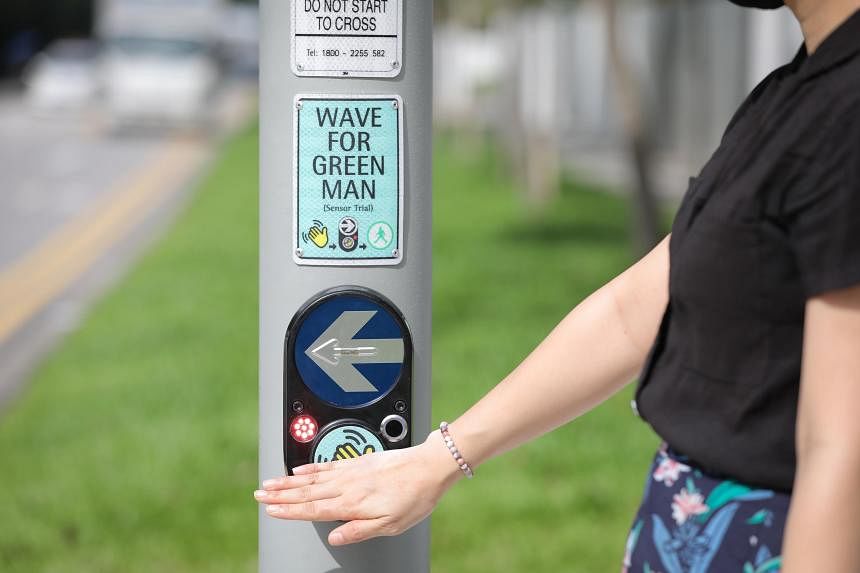SINGAPORE - A wave of the hand, instead of the push of a button, is all it will take to call for the green man at four signal-controlled pedestrian crossings that are testing out a new contactless system over the next six months.
The Land Transport Authority (LTA) said on Thursday the touchless push buttons being trialled use microwave-based sensors to activate the green-man signal.
The sensors will be progressively rolled out and tested in Serangoon Road near the Kallang Park Connector, in Fernvale Lane near Fernvale Primary School, in Bukit Batok Street 31 near Dazhong Primary School, and in Circuit Road, near the hawker centre there.
It follows a six-month trial by LTA in 2022 to test similar contactless push buttons relying on a different type of sensor – infrared – to detect hand waves.
The infrared buttons were installed at signalised crossings in Jalan Besar near Syed Alwi Road, in Tampines Street 86 close to Block 879A, in Bukit Batok Street 32 near St Anthony’s Primary School, and in Yishun Street 21 near Block 219.
LTA previously said it would be evaluating whether the infrared sensors in the contactless buttons are sensitive enough, if they can withstand the weather here, and whether they can cope in busy areas.
On Thursday, the authority said the infrared sensors performed “as expected” during the 2022 trial, and could be considered a viable alternative to the existing pedestrian push buttons.
However, it wants to explore other sensor options, and the latest trial will allow it to compare the detection accuracy and sensitivity of infrared versus microwave technology, as well as their durability in Singapore’s environmental conditions.
LTA said it will assess the performance of both types of sensors before deciding which to use, taking into account those factors and pedestrian feedback.
While infrared sensors rely on changes in light to detect hand movements to activate the green-man signal, microwave sensors emit electromagnetic waves and use changes in the frequency of the waves that are reflected into the device to detect movement.
Generally, microwave sensors are more sensitive than infrared sensors, but are hence more prone to being triggered by mistake. Microwave sensors are also said to have a longer lifespan than infrared ones, but require more electricity and can be more costly to operate.
LTA has said that one issue with traditional push buttons is wear and tear, which can lead to them getting stuck or not working properly. Push buttons, which have an expected lifespan of 15 to 20 years, also require more maintenance as they age. There are more than 11,000 push buttons installed at about 2,400 traffic junctions here, LTA said in July 2022.
For the contactless versions under trial, the physical button in the middle of the device is disabled, and a sensor is added to it instead.
The sensor will detect when a pedestrian waves his hand in front of the button, and a red light on the left side will turn on if the wave is registered.
A signal is then sent for the green man to light up.
The hope is that without the mechanical button and physical contact, the contactless devices will be more reliable and easier to upkeep, saving costs and manpower in the long run.
The contactless devices should also minimise the transmission of Covid-19 and other diseases, with similar trials conducted over the past couple of years in Australia and Canada for this reason.
However, The Straits Times has previously reported that the contactless buttons may pose challenges for the visually handicapped as there is no tactile feedback. LTA says there will be audio cues to guide this group instead.


